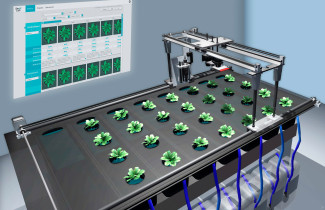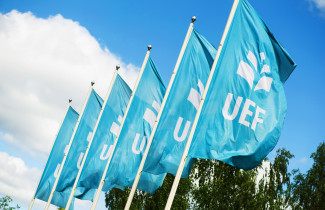The Digitarium initiative for developing mass digitisation of natural history collections was concluded at the end of 2017. However, digitisation work and methodological development will continue in the Finnish Museum of Natural History at the University of Helsinki.
Emerging as a spin-off company from the project, Sertifer Consulting will continue Digitarium’s commercial activities, delivering digitisation equipment to customers all over the world.
“Although Digitarium’s activities ended in Joensuu, the story of Digitarium continues,” says Hannu Saarenmaa from Sertifer Consulting the former Research Director of Digitarium.
“Two employees from Joensuu moved to the Finnish Museum of Natural History in Helsinki, and in Joensuu, our company employs three former staff members of Digitarium.”
Over the years, Digitarium digitised some 330,000 natural history specimens in Joensuu, resulting in approximately 40 scientific publications and many other publications relating to methods for the digitalisation of science.
“Our company has licensed from the university the rights to distribute Digitarium’s innovations. We supply our customers with integrated digitisation systems. Two invention disclosure notifications relating to these systems were filed with the university during our project.”
“In other words, if a museum wants to have a digitisation line, we’ll build one for them. At the moment, we are finalising an insect digitisation line for the Natural History Museum in Berlin,” Saarenmaa says.
“We have also other international contacts, for example in Sweden, Denmark, Canada and South Africa. This is a new, emerging field, and we now need to succeed in closing deals with our contacts. There is some competition in the field of plant digitisation, but our insect digitisation systems are unique. However, we also collaborate with our competition in some research activities.”
“It’s great that we can make our digitisation lines available to consumers, and that Digitarium ended up being more than a mere development project,” says Research Technician Janne Karppinen, who moved over to Sertifer Consulting from Digitarium.
“The digitisation lines built by Digitarium in Helsinki remain in active use, speaking volumes of the quality of our work.”
“We are very proud of everything we achieved in Digitarium,” Saarenmaa says.
“We haven’t created everything from scratch – I, for example, was involved already in the launch of the Global Biodiversity Information Facility.”
Finnish database with more than 27 million observations, global with nearly one billion
The Finnish Biodiversity Info Facility’s Laji.fi portal has more than 27 million observations and over 30,000 species. Anyone can submit their observations to the database, and a significant proportion of the existing observations are from Digitarium.
“Researchers can utilise the portal in different ways. For example, they can analyse the effects of climate change by modelling the spreading of different species,” Saarenmaa says.
“By using extensive data compiled from hundreds of different sources, it is possible to calculate models about what will happen to species and their habitats as a result of climate change. It is also possible to make future projections about how the distribution and abundance of species will develop. In fact, this is the most common way data from open access biodiversity information facilities are currently used.”
“For instance, forest pest insects are a group that benefits from climate change. Nun moth populations, among others, have grown exponentially over the past years,” Saarenmaa says.
“Overall, the butterfly and moth fauna in Finland has moved 500 kilometres northward since the 1970s. Finland has also witnessed many new butterfly and moth species, in particular since the early 2000s. The same is also true for other species of insects.”
In the end, all specimens digitised in Finland will end up in the Global Biodiversity Information Facility. Currently, their portal has, and makes freely and openly available to researchers worldwide, nearly one billion observations in the field of natural history.
Digitarium http://digitarium.fi/
Sertifer Consulting http://www.sertifer.fi/
Finnish Biodiversity Info Facility https://laji.fi/
Global Biodiversity Information Facility https://www.gbif.org/
In the photo: The holly blue, Finland’s national butterfly, image by Digitarium. Photo (C) Päivi Strandén and University of Eastern Finland.



